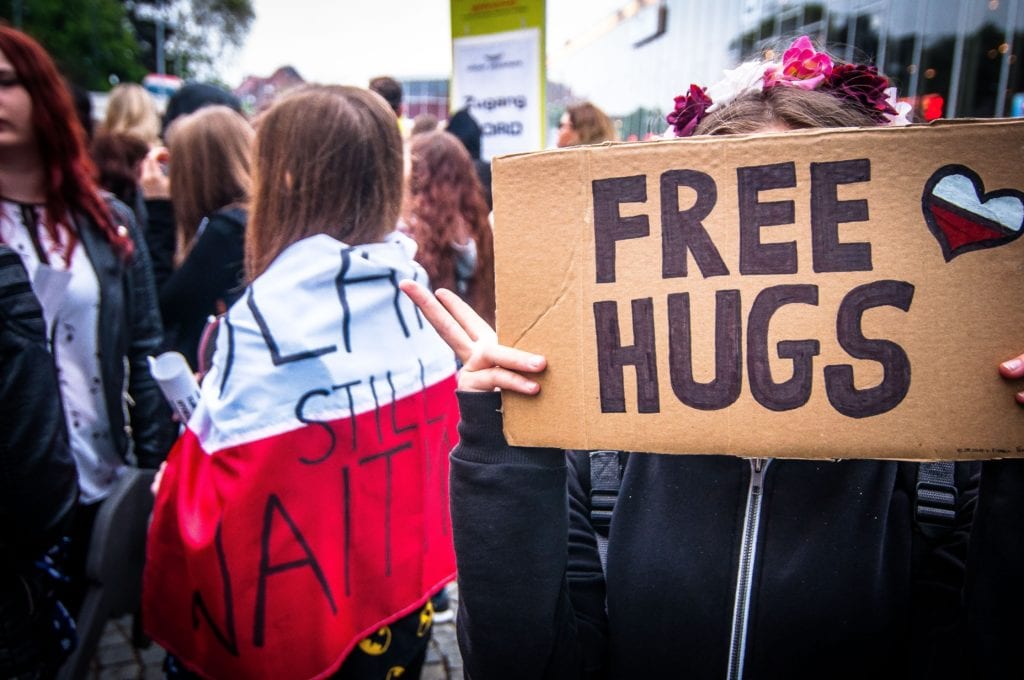When I dragged my husband to a cuddle party in downtown Manhattan early in our marriage, I thought it would be just my speed. I had been struggling for years with “low” libido and painful intercourse as a result of an earlier, unhealthy relationship, yet I still craved affectionate touch.
A cuddle party—I thought—would be the perfect low-pressure environment in which to engage in physical intimacy without feeling obligated to do anything more.
And while that may have been true—I had never before felt so desexualized in my life—the act of sharing my cuddles with perfect strangers felt uncomfortable.
Cuddle parties aren’t for everyone. They certainly weren’t for me. I tend to prefer my cuddles in the privacy of my bed, right before lights-out. On the other hand, there are those who love a full-on cuddle puddle, and who even employ the services of professional cuddlers.
Whether you’re a group cuddler or someone who prefers their cuddles one-on-one, own it! There are clear benefits to this form of touch, no matter how you like it.
1. The So-Called Cuddle Hormone Does a Body Good
2. Giving Your Loved One a Squeeze Can Make the Stress Melt Away
3. Cuddling Can Keep the Blues Away
In addition to reducing your cortisol levels—helping you get a handle on stress and anxiety—the oxytocin released during cuddling can help keep depression at bay. How? Oxytocin promotes empathetic behavior, which means that rather than isolating oneself, someone battling depression might instead feel compelled to reach out for help. Because of this, there have been a number of studies that have sought to determine whether being dosed with oxytocin might be an effective treatment for depression. Results have thus far been mixed, but that’s okay. There’s no need to get a prescription when hugs are available over-the-counter!
4. Spooning Might Make Your Relationship Stronger
But guess what? The oxytocin released during cuddling alone can also strengthen relational bonds. Research shows that people feel more loving and affectionate toward each other when they cuddle and that cuddling can actually lead to more sex, which in turn can lead to more cuddling, which… will ensnare you in a non-stop cycle of love? Sounds good to me!
All kidding aside, maintaining that intimate connection with your partner can be crucial, especially when you’re in a long-term relationship. In my forthcoming memoir, A Dirty Word , I write about how an unhealthy sexual relationship had negative repercussions that echoed all the way into my marriage. For a long time, I dreaded sex yet, at the same time, because I was married, I felt guilty for not wanting it more. But that guilt also made me resentful. And that resentment made me pull away. And soon enough, my husband and I were more like roommates than romantic partners.
Learning how to engage in some good old non-demand touching can work wonders for keeping you and your partner connected, even when you don’t feel like being full-on sexual. What kind of cuddler are you? Personally, I prefer the “the butt ‘cheek-to-cheek.'” According to Healthline, this means that I want to feel connected to my partner, but that I still value both my freedom and my sleep. This is…remarkably spot-on.
Bo no matter what type of cuddler you are, one thing’s for sure: keeping those snuggles a regular part of your life will do you a world of good.

